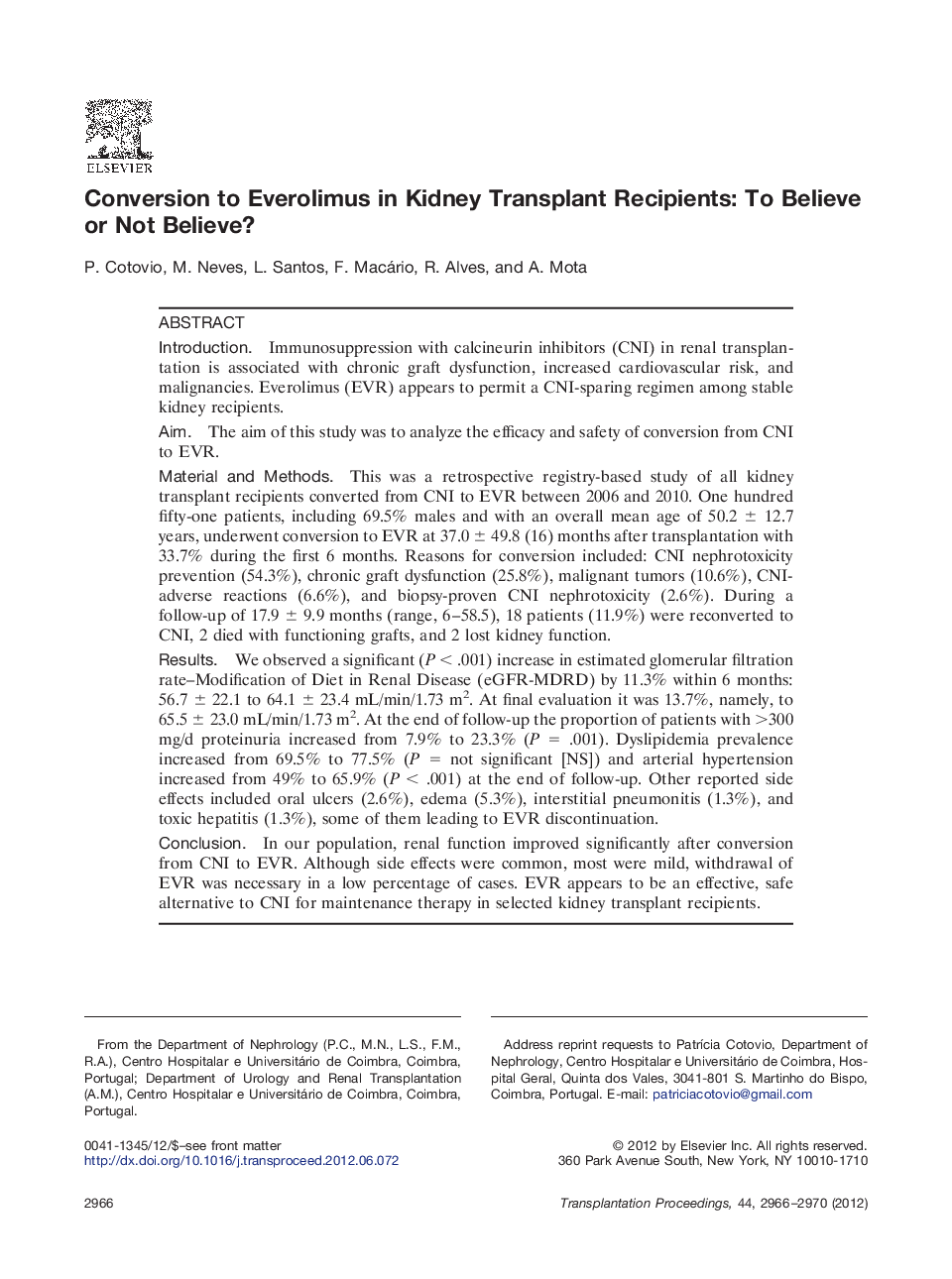| Article ID | Journal | Published Year | Pages | File Type |
|---|---|---|---|---|
| 4256216 | Transplantation Proceedings | 2012 | 5 Pages |
IntroductionImmunosuppression with calcineurin inhibitors (CNI) in renal transplantation is associated with chronic graft dysfunction, increased cardiovascular risk, and malignancies. Everolimus (EVR) appears to permit a CNI-sparing regimen among stable kidney recipients.AimThe aim of this study was to analyze the efficacy and safety of conversion from CNI to EVR.Material and MethodsThis was a retrospective registry-based study of all kidney transplant recipients converted from CNI to EVR between 2006 and 2010. One hundred fifty-one patients, including 69.5% males and with an overall mean age of 50.2 ± 12.7 years, underwent conversion to EVR at 37.0 ± 49.8 (16) months after transplantation with 33.7% during the first 6 months. Reasons for conversion included: CNI nephrotoxicity prevention (54.3%), chronic graft dysfunction (25.8%), malignant tumors (10.6%), CNI-adverse reactions (6.6%), and biopsy-proven CNI nephrotoxicity (2.6%). During a follow-up of 17.9 ± 9.9 months (range, 6–58.5), 18 patients (11.9%) were reconverted to CNI, 2 died with functioning grafts, and 2 lost kidney function.ResultsWe observed a significant (P < .001) increase in estimated glomerular filtration rate–Modification of Diet in Renal Disease (eGFR-MDRD) by 11.3% within 6 months: 56.7 ± 22.1 to 64.1 ± 23.4 mL/min/1.73 m2. At final evaluation it was 13.7%, namely, to 65.5 ± 23.0 mL/min/1.73 m2. At the end of follow-up the proportion of patients with >300 mg/d proteinuria increased from 7.9% to 23.3% (P = .001). Dyslipidemia prevalence increased from 69.5% to 77.5% (P = not significant [NS]) and arterial hypertension increased from 49% to 65.9% (P < .001) at the end of follow-up. Other reported side effects included oral ulcers (2.6%), edema (5.3%), interstitial pneumonitis (1.3%), and toxic hepatitis (1.3%), some of them leading to EVR discontinuation.ConclusionIn our population, renal function improved significantly after conversion from CNI to EVR. Although side effects were common, most were mild, withdrawal of EVR was necessary in a low percentage of cases. EVR appears to be an effective, safe alternative to CNI for maintenance therapy in selected kidney transplant recipients.
